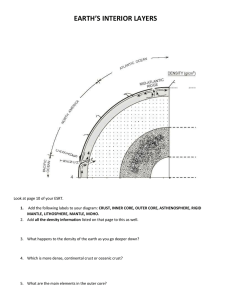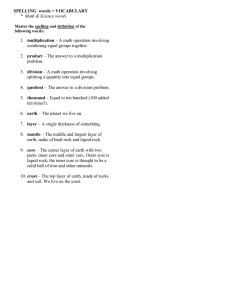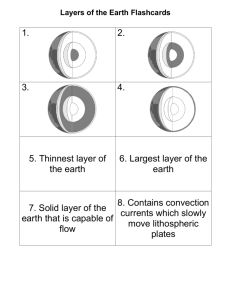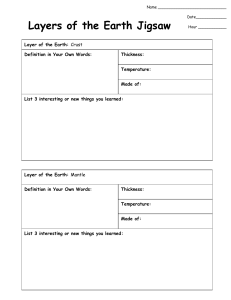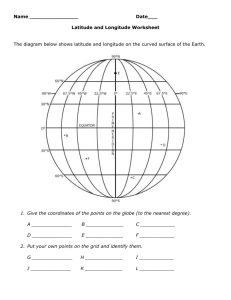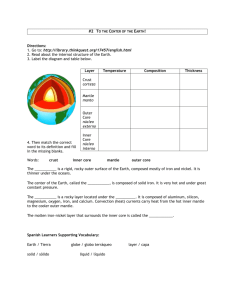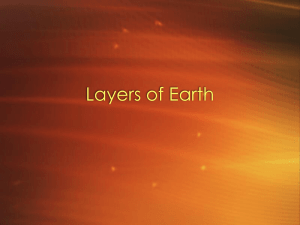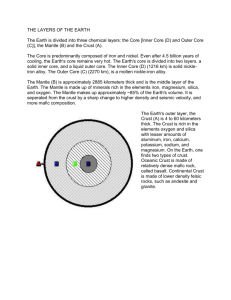THE STRUCTURE OF THE EARTH - Queensland Science Teachers
advertisement
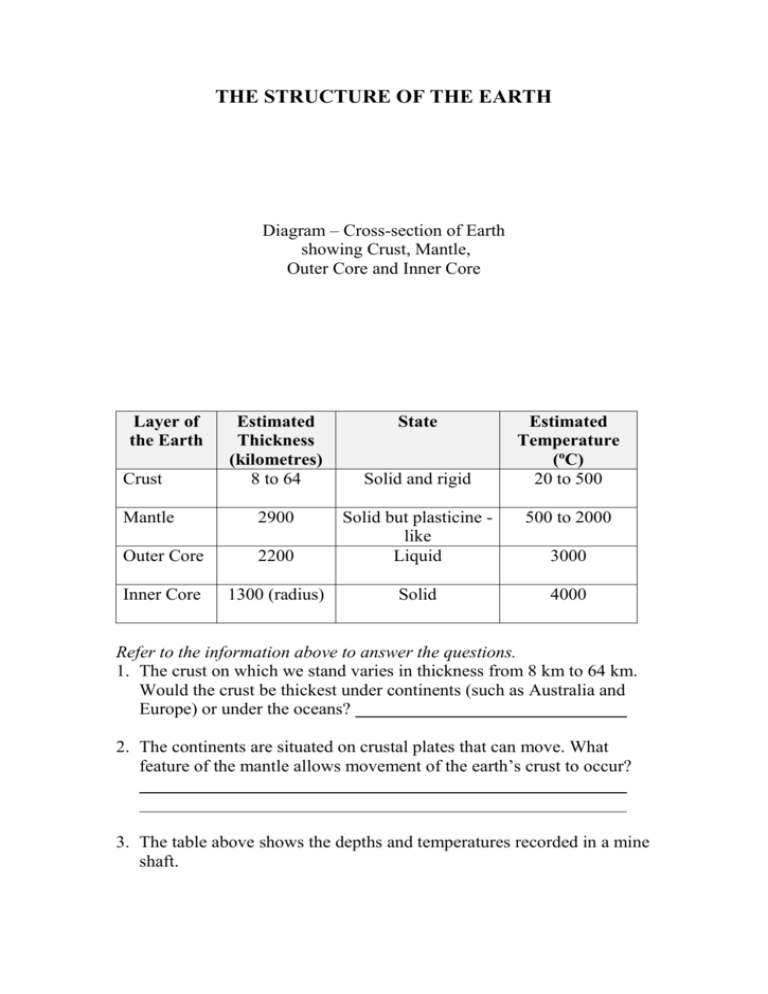
THE STRUCTURE OF THE EARTH Diagram – Cross-section of Earth showing Crust, Mantle, Outer Core and Inner Core Layer of the Earth Crust Estimated Thickness (kilometres) 8 to 64 Mantle 2900 Outer Core Inner Core State Solid and rigid Estimated Temperature (oC) 20 to 500 500 to 2000 2200 Solid but plasticine like Liquid 1300 (radius) Solid 4000 3000 Refer to the information above to answer the questions. 1. The crust on which we stand varies in thickness from 8 km to 64 km. Would the crust be thickest under continents (such as Australia and Europe) or under the oceans? 2. The continents are situated on crustal plates that can move. What feature of the mantle allows movement of the earth’s crust to occur? 3. The table above shows the depths and temperatures recorded in a mine shaft. Depth (km) 0 1 2 3 4 5 6 7 Temperature (oC) 20 51 82 112 142 171 201 230 (a) Plot the data on a line graph on your own paper. Mark the depth on the horizontal axis from 0 to 20 km. Mark the temperature on the vertical axis from 0 to 500oC. (b) Predict the temperature at the following depths – 8 km and 20 km. (c) The deepest mine is less than 10 kilometres deep. How do you think geologists (scientists who study earth movements and rocks) estimate the thickness and temperature of the layers of the earth? 4. The outer core is liquid (molten rock). However the inner core which is hotter than the inner core is thought to be solid. How is this possible?

